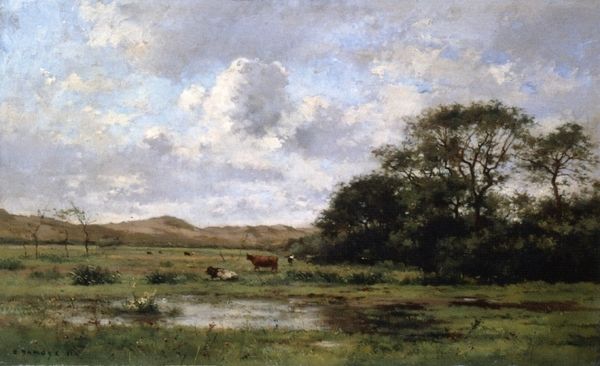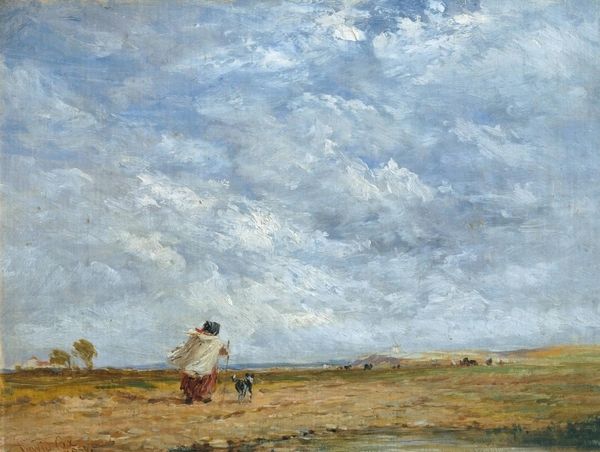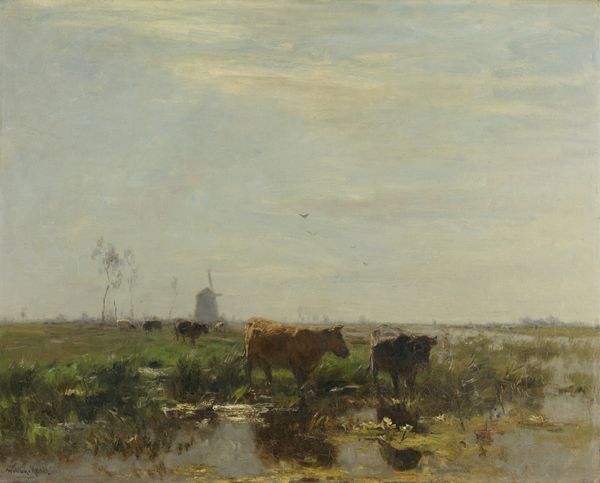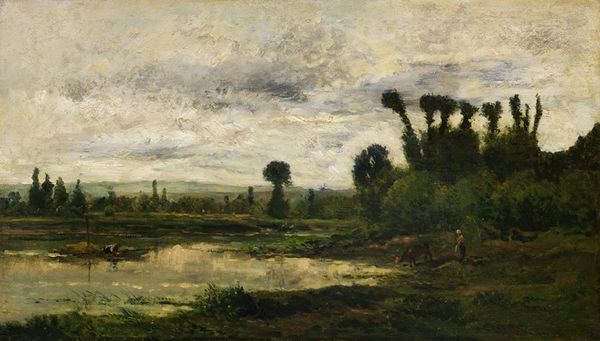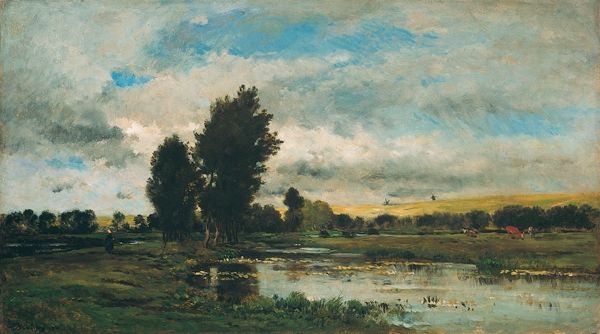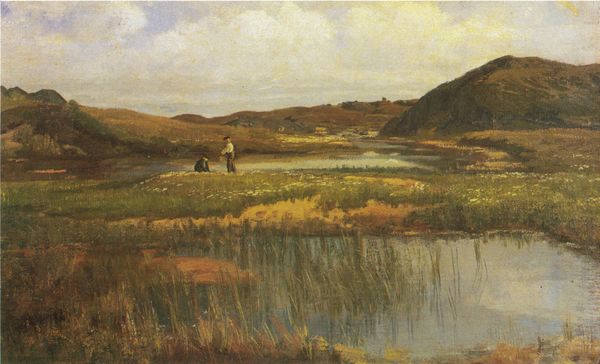
Copyright: Public domain
Curator: Good morning! Today, we’re standing before Pierre Emmanuel Damoye's "Prairies inondees / Pas de Calais," painted around 1880. Editor: There’s an almost tangible quietness here. The stillness of the water, reflecting that sky... it’s very calming, even slightly melancholy. Curator: That melancholy is interesting, especially when we consider Damoye's position within the Barbizon school – known for its dedication to painting en plein air and capturing the ephemeral qualities of light. What you're seeing are probably oils, carefully layered to give that sense of diffused, almost humid atmosphere over the fields of the Pas de Calais region in France. Editor: It certainly brings up a lot. Looking at this image in the twenty-first century, knowing what we know about rising water levels and changing climates... paintings like this almost become unintentional documents of landscapes at risk. The seemingly casual title now rings with the weight of ecological anxiety. Curator: That’s a valid reading, given today's climate crisis. However, it also seems he wanted to show nature as it was without heavy idealizations or political commentary. It's a working landscape, after all—note the cows grazing peacefully. The romanticism comes from this honest embrace, in his effort to capture a fleeting impression of the real world around him. Editor: Perhaps it is both? Art rarely exists in a vacuum, does it? This "impression," beautiful as it is, is always already filtered through human concerns. Even the choice to depict *this* specific landscape speaks to certain class dynamics: who has access to the countryside? Whose labor sustains it? The quiet idyll is made possible, remember, through exploited labor, both human and animal. Curator: A darker read than I usually ascribe to it. And yet, undeniable in its connection to society! This work, and countless others, reminds us that how we relate to the land is perpetually intertwined with the issues of labor, privilege, and access. It challenges viewers to consider the landscape not just as scenery, but as a mirror reflecting societal values. Editor: Precisely! A landscape pregnant with meanings we bring to it from the vantage point of today. A true picture’s beauty—beyond aesthetics—resides in how dynamically it keeps speaking across eras.
Comments
No comments
Be the first to comment and join the conversation on the ultimate creative platform.
